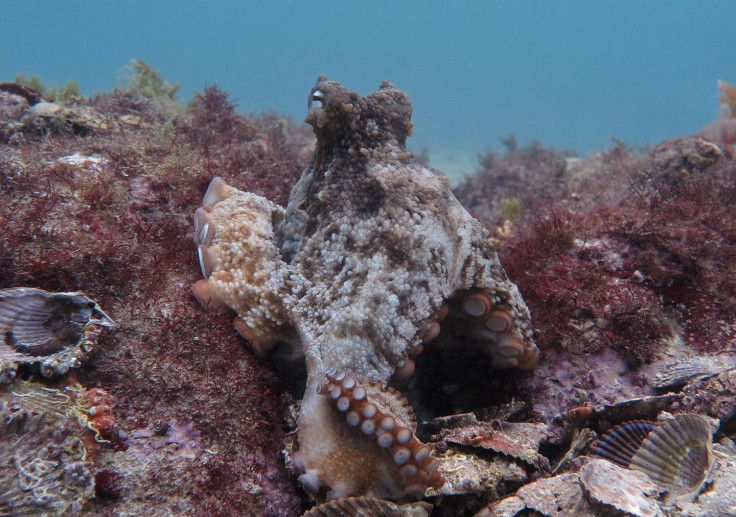A gloomy octopus city made of shells has been discovered off Australia's east coast
But they're not necessarily very nice to each other.

A large group of octopuses have been discovered living together off the east coast of Australia. The ways they communicate include changing colour and posturing, scientists have found.
Octopuses are known for leading solitary lives, only coming into contact with one another for the necessity of mating. But a growing number of octopus 'settlements', or groups, have been discovered.
The settlement off eastern Australia is only the second large group of gloomy octopuses living together, described in a study in the journal Marine and Freshwater Behaviour and Physiology.
"At both sites there were features that we think may have made the congregation possible – namely several seafloor rock outcroppings dotting an otherwise flat and featureless area," said study author Stephanie Chancellor of the University of Illinois at Chicago.
The octopuses had made the outcroppings their own. They built up piles of shells from clams and scallops around the settlement.
"These shell piles, or middens, were further sculpted to create dens, making these octopuses true environmental engineers," said Chancellor.
The animals resided very close to each other, often within reach of one another's tentacles. However, they often weren't particularly friendly in their interactions.
"Some of the octopuses were seen evicting other animals from their dens. There were some apparent threat displays where an animal would stretch itself out lengthwise in an 'upright' posture and its mantle would darken. Often another animal observing this behaviour would quickly swim away," said Chancellor.
"But we still don't really know much about octopus behaviour. More research will be needed to determine what these actions might mean."
© Copyright IBTimes 2025. All rights reserved.





















